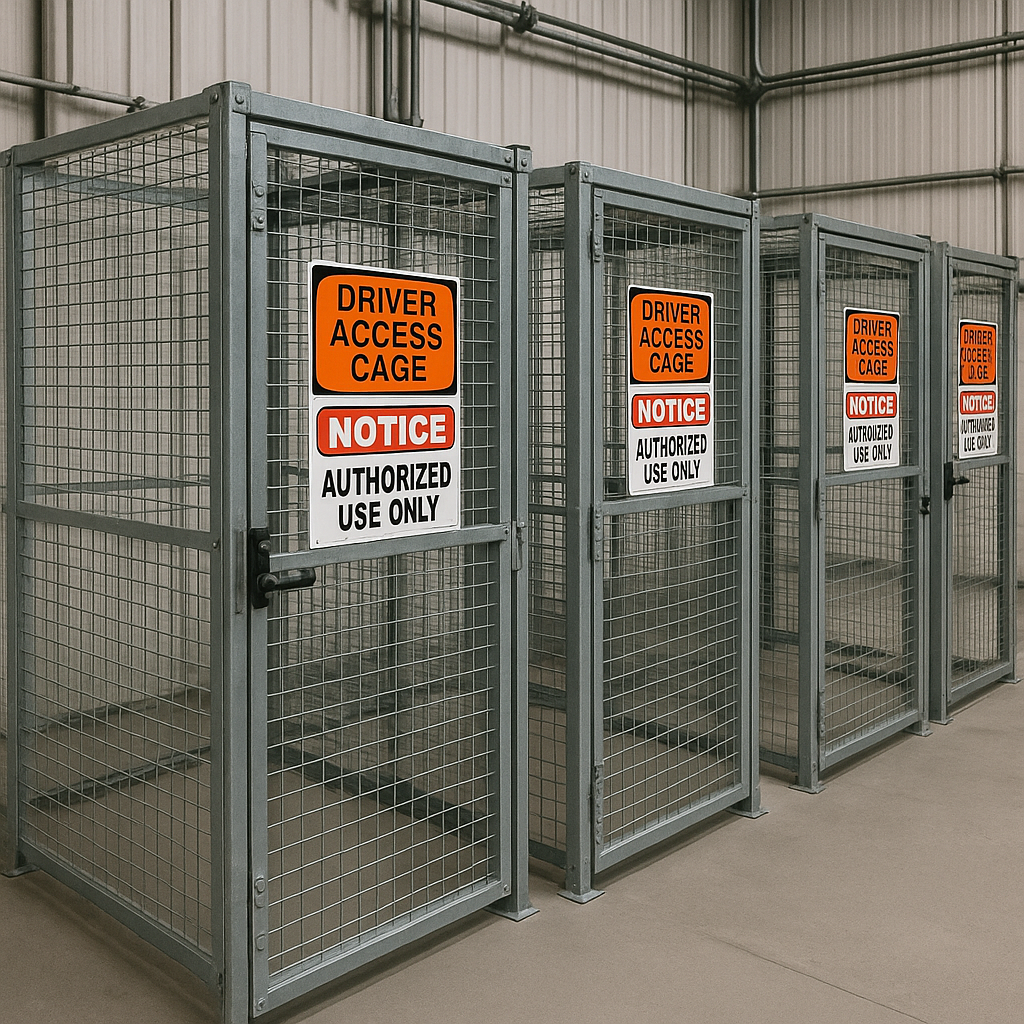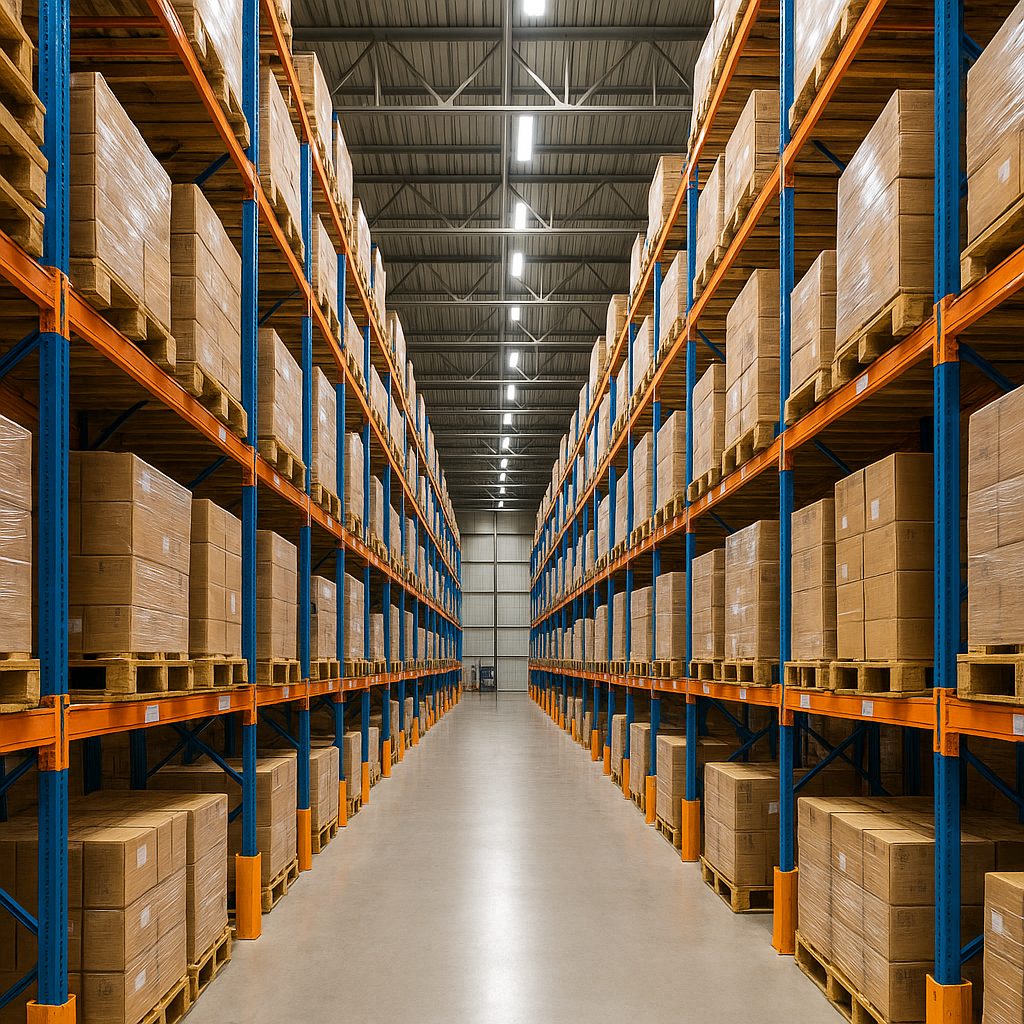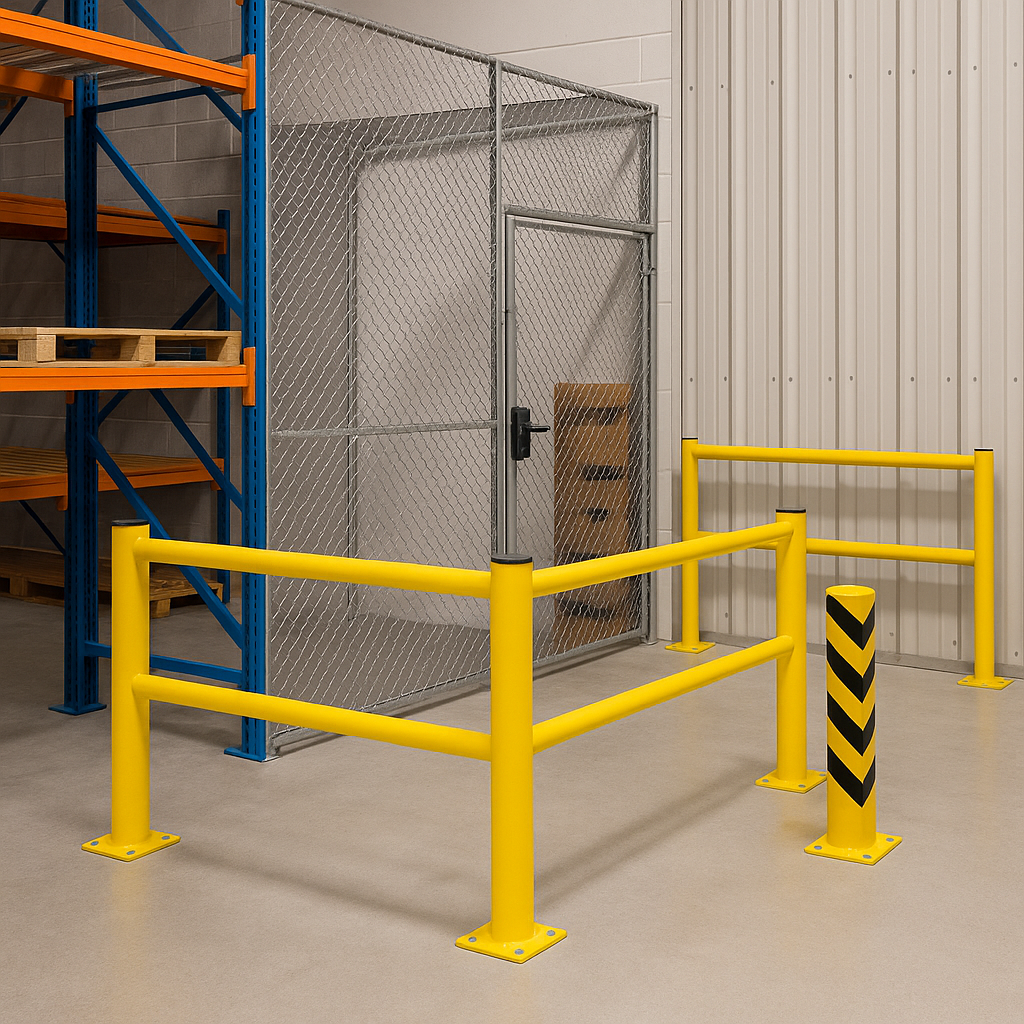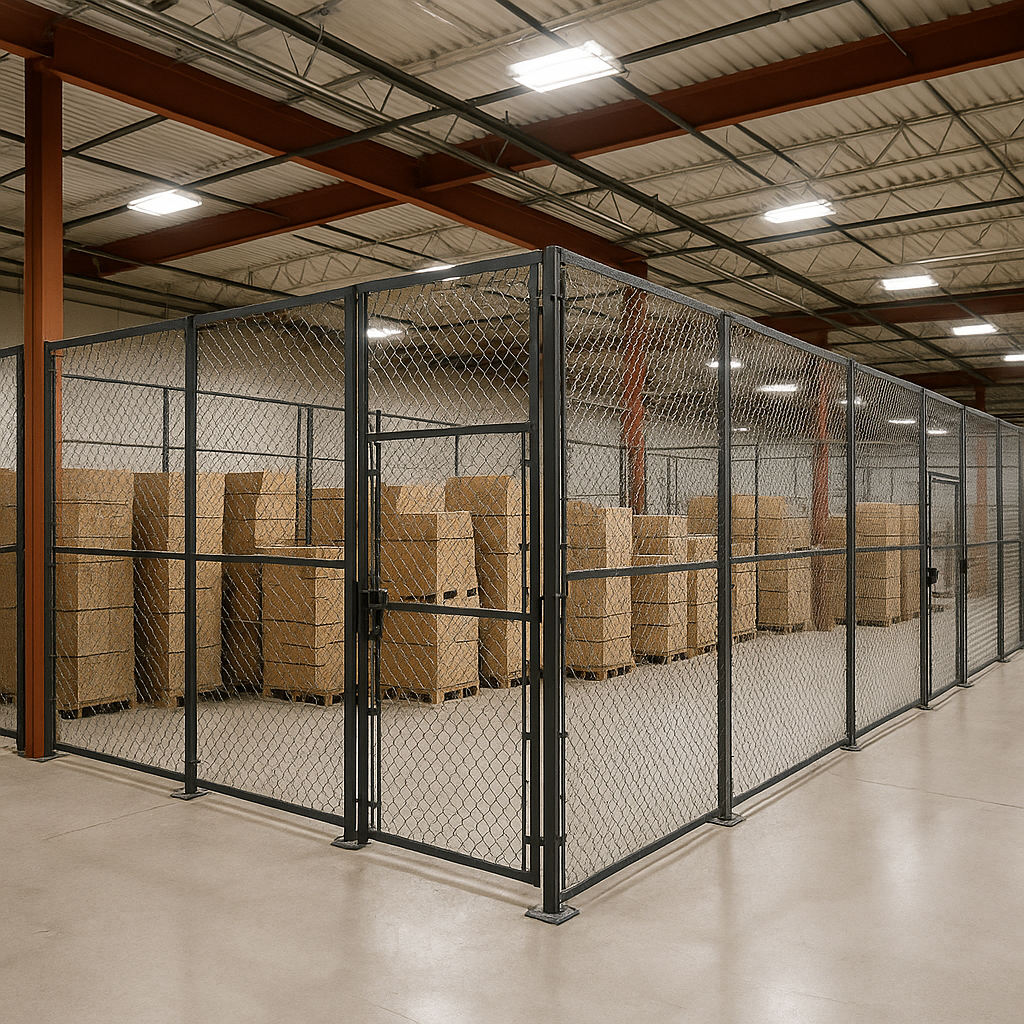In a busy warehouse environment, safety and security are top priorities—especially in high-traffic receiving and shipping zones. While efficiency matters, it’s critical to limit access to sensitive areas where inventory, equipment, or personnel could be at risk. That’s where driver cages come in.
Driver access cages, also known as man traps or visitor holding cages, are a highly effective component of any comprehensive warehouse security plan. These simple yet powerful structures restrict unsupervised access to your warehouse, protecting your people, products, and operations.
What Is a Driver Cage?
A driver cage is a secure enclosure, usually installed at dock doors or main entry points, designed to control access to the warehouse interior. It allows delivery drivers, third-party vendors, or visitors to enter a designated area without granting full access to your warehouse floor.
Most driver cages feature:
- Mesh walls for visibility and airflow
- Lockable or access-controlled doors
- Space for driver check-in or document drop-off
- Optional benches or counters for signing paperwork
Why Are Driver Cages Important?
🔒 1. Enhanced Warehouse Security
Delivery drivers often come and go throughout the day. Without a controlled point of entry, there’s a risk that unauthorized personnel could access sensitive areas, equipment, or inventory. Driver cages create a buffer zone between external traffic and internal operations, providing a secure space for interaction without exposing your facility to risk.
🛡 2. OSHA and Safety Compliance
Many access control systems are designed with OSHA compliance in mind. A driver cage can help reduce foot traffic in forklift or high-activity zones, limiting the potential for accidents involving external personnel. This is especially important in facilities handling hazardous materials, pharmaceuticals, or high-value products.
📦 3. Streamlined Check-In Process
Driver cages support a more organized and professional visitor management process. Drivers know exactly where to go, what to do, and who to contact—reducing confusion and lost time. It also keeps warehouse teams focused, rather than stopping work to handle arrivals.
Common Use Cases for Driver Cages
- Freight and Logistics Facilities: Prevents delivery drivers from walking into live dock or inventory zones.
- E-commerce Warehouses: Maintains security in fast-moving fulfillment operations with frequent third-party pickups.
- Cold Storage and Food Warehouses: Ensures compliance with sanitation protocols by limiting unauthorized entry.
- Pharmaceutical or Controlled Goods Facilities: Restricts access to DEA cages, restricted stock areas, or temperature-sensitive zones.
Integrating Driver Cages with Access Control Systems
Driver cages can be equipped with advanced access control systems, including:
- Keypad or badge readers
- Video intercoms
- Time-based locks
- Visitor log integration
These systems help you manage access logs, enforce entry windows, and ensure only authorized personnel can unlock gates—adding a digital layer to your physical security.
WT Hight: Your Partner in Smart Warehouse Security
At WT Hight, we help businesses create smarter, safer warehouse environments through tailored solutions. Our team will help you:
- Design and install custom driver cage enclosures
- Integrate access controls that align with your existing systems
- Meet safety and OSHA compliance standards
- Enhance overall warehouse security without disrupting workflow
Final Thoughts
With growing pressure to protect both people and product, driver cages offer a simple and cost-effective way to reinforce security at one of the most vulnerable points in your facility.








